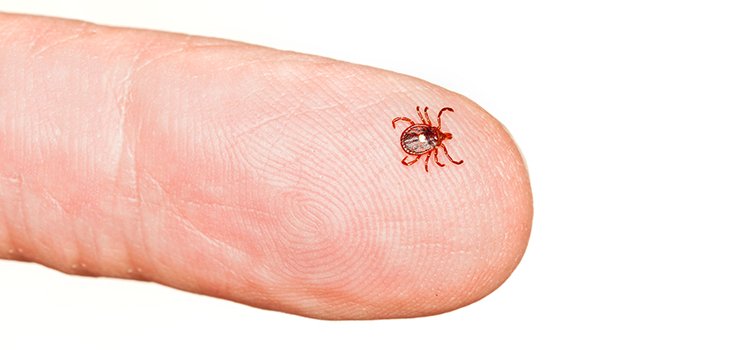How to Keep Ticks off of You, and Get Rid of Them if Needed

I used to live in the middle of nowhere, and my neighbors and I were constantly picking ticks off of our pets. When you think about ticks, you associate them with living in the woods. But these Lyme-disease carriers are everywhere. Whether you’re hiking through the wilderness or yanking weeds out of your backyard garden, there could be a tick nearby, eyeing you up like a juicy burger.
Do you know how to handle finding a tick on your clothes? Let’s test your knowledge with a little quiz.
You find a tick on your pant leg. You should:
- Rip your pants off and throw them in the trash.
- Douse yourself in gasoline and set yourself on fire.
- Stumble into traffic and get hit by a truck.
- Put them in the dryer for 6 minutes.
If you chose #4, you answered correctly. Though, the other options are tempting at the time.
According to a new study in the journal Ticks and Tick-borne Diseases, 6 minutes of spinning in a dryer will kill any ticks on clothes and help prevent tick-related illnesses.
The CDC recommends washing them first – which I’d probably do – and then drying them for an hour.
For as tiny as they are, ticks are serious business. In the U.S., tick bites cause an estimated 300,000 Lyme-disease infections every year, along with several other diseases, according to the CDC’s National Center for Emerging and Zoonotic Infectious Diseases in Colorado.
Read: Scientists Discovered A New Bacteria That Causes Lyme Disease
For the study, the researchers – who must have nerves and guts of steel – washed and dried hundreds of lab-raised blacklegged ticks and immature nymphs, 5 at a time, in cloth bags in residential washers and dryers in Vermont, Maine, and Massachusetts. The insects that survived were dried with wet towels at low and high heat. They placed the control ticks in containers at room temperature.
In a separate experiment, bugs were dried – without pre-washing – with dry towels at various temperatures. [1]
Gross.

Avoiding Ticks Altogether
I prefer to just avoid getting ticks on me in the first place. Here’s how to do it:
- Try repellents, if you are into that. Some insect repellents may help. Check out what Consumer Reports found on which repellents work best on ticks, as reported by WebMD. Consumer Reports listed the following as top choices in 2010: Cutter Backwoods, Off Deep Woods, Off FamilyCare, 3M Ultrathon, Repel, and Natrapel. Just remember to consider whether or not the chemicals in these products bother you.
- Cover your ankles. Wear long pants and tuck them into your socks when doing yard work. Make sure to duct tape them – sticky-side out – around where the pants and socks meet so that if any ticks crawl on you, they’ll get stuck. You should especially do this if you have teenagers, particularly when they have friends over. Make sure you wave.
- Do tick checks. Tick bites are painless, so you might not know if you’ve become a buffet. Give yourself a once-over every so often.
- Check your pets. Make sure your pets are tick-free before you bring them inside.
- Keep ticks away from your home. Ticks like tall grass, so keep lawns trimmed, and create barriers between your yard and wooded areas with wood chips, mulch, or gravel. Remove wood piles, and stones where mice, chipmunks, and squirrels like to hide. These animals keep tick larvae and nymphs circulating in nature.
- Hike carefully. Stay in the center of hiking trails to avoid contact with vegetation.
If you find a tick on your skin, lift it gently with thin forceps or tweezers. Using a magnifying glass can help you get all of the insect. Never use matches or the tip of a cigarette to burn ticks, as this could make them transmit bacteria more quickly. [2]
Read: 8 Lesser-Known Natural Bug Repellents That May Work
Sources:
[2] HealthDay
